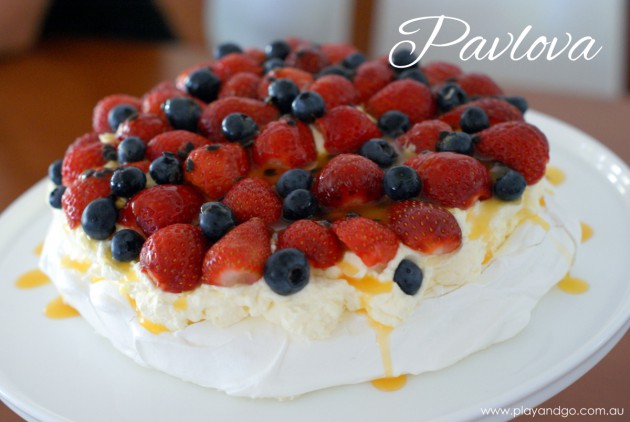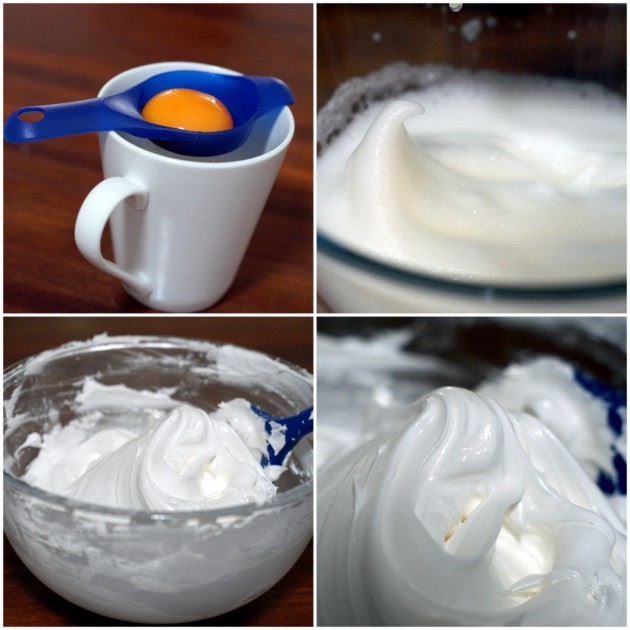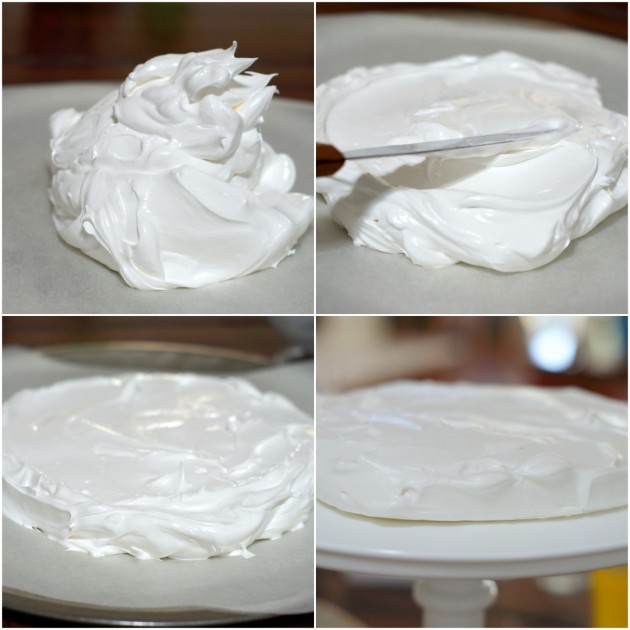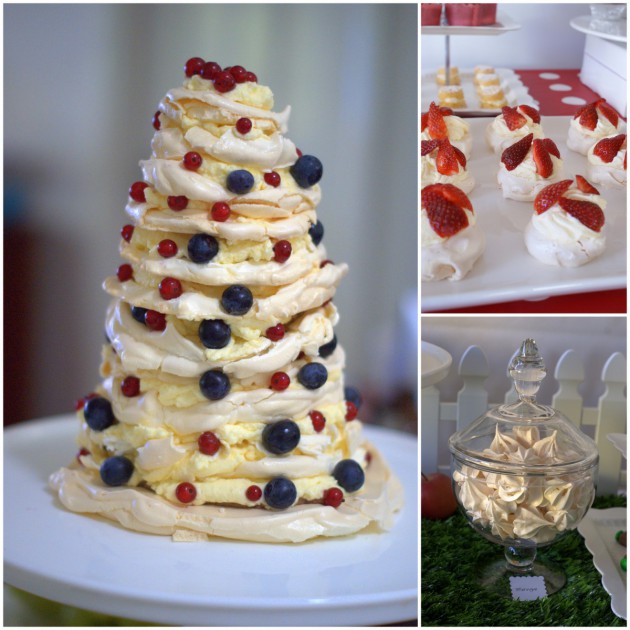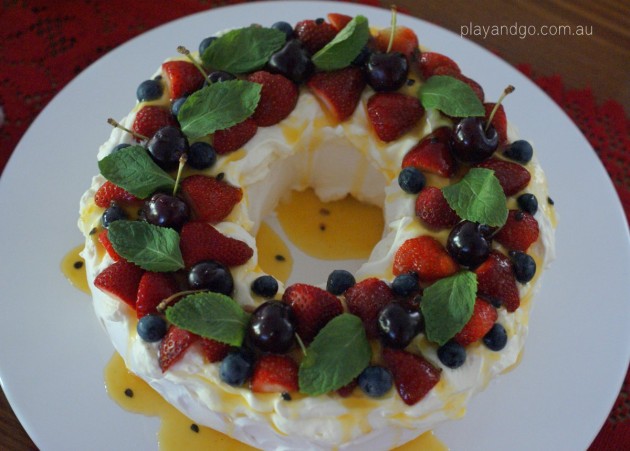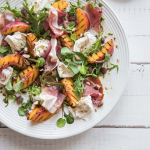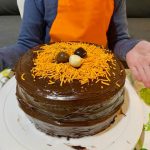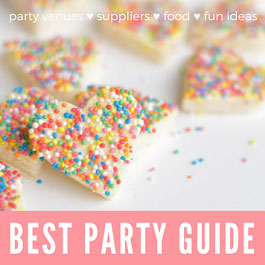I have always loved Pavlova but thought it was too hard to make. About 17 years ago (Ok, that makes me sound ancient) I went to a bbq and the lovely host served up a beautiful Pavlova and convinced me that it really wasn’t very hard to make. So I took her recipe and gathered tips from my friend’s mother, who had been making them for at least 30 years, and have been making them ever since. I am no expert on this, and yes, it can take a little bit of trial and error depending on your oven, but it’s a dessert that everyone loves and has a little bit of wow factor.
What You Need
6 Egg Whites
1 1/2 Cup of Castor Sugar
3 tsp Cornflour (this can be omitted to make it gluten free)
1 tsp White Vinegar
{For a smaller Pavlova just use 4 Egg Whites with 1 Cup of Castor Sugar with a little less Cornflour and White Vinegar}
What To Do
1. Line a baking tray with non-stick baking paper.
2. Heat the oven to 100 degrees Celcius fan forced.
3. Beat the egg whites* (see Tip below about separating egg whites) until soft peaks form.
4. Add castor sugar a little bit at a time and beat well until dissolved, until the mixture is thick and glossy. Check that it doesn’t feel too grainy when you rub a little between your fingers.
5. Mix in the sifted cornflour and white vinegar.
6. Transfer the mixture onto the baking tray and shape it into a round circle with a flat blade or knife. If you are not confident in making it round freestyle, draw a circle on the baking paper by tracing around a plate and use this to guide you.
7. Pop it into the oven and bake for 1 hour and 15 minutes.
8. When the time is up, turn off the oven, but leave it in there to cool completely. Don’t open the oven door at all until it’s cooled. I will often leave it there overnight until I’m ready to serve it the next day.
Serve the Pavlova with whipped cream on top. I beat about 900ml of thickened cream to cover a pavlova of this size.
Use any fruits you like on top – strawberries, blueberries, mango, raspberries, peaches.
I then always add a little tin of Passionfruit Syrup (usually the John West brand). Drizzle this over the top of the fruit and cream just before serving. On a warm day, chill the syrup in the fridge first.
You can of course use real passionfruit but for consistency I use the tin variety.
With this recipe you can also make meringues (which are just little pavlovas) in all sorts of shapes and sizes. See our examples below. Just pipe to get the size and shape you want for the mini meringues, ghost meringues or mini pavlovas. If they are smaller, bake for a shorter time (about 45 minutes for mini meringues). Also you don’t need quite as much mixture so adjust the recipe to 4 eggs and 1 cup of castor sugar.
Tips for getting the perfect Pavlova
Use a dry, clean glass bowl. I was told this by my friend’s mother so have dared not go against this rule. Plastic bowls retain moisture and grease which causes the egg whites to not aerate as well when beating.
Eggs are better at room temperature – and best to use the freshest eggs you have. Again, this will help with getting volume and air when beating egg whites. Cold egg whites take longer to beat and therefore do not aerate as well. Either buy eggs from the supermarket and leave them out of the fridge if you are making the pavlova within about 24 hours or take them out of the fridge at least half an hour before.
Humidity is not good for pavlova making – moisture in the air stops the eggs from aerating. Therefore it is best not to make Pavlovas on rainy or humid days. {I know, these eggs are very temperamental aren’t they?}
* When separating the egg whites from the yolks, do this one at a time in a separate cup, transferring each egg white into your bowl, only if no yolk is present. If you separate your eggs straight over the bowl, you run the risk of having an egg yolk break and fall in, then having to start all over (Murphy’s Law will cause this to happen on the last egg)!!
At Christmas you can use the basic pavlova recipe and do a Christmas tree or wreath below.
Don’t worry if you get a few cracks appear on your pavlova and it doesn’t look perfect – the cream will cover it and keep it together. And it will still taste yummy.
Enjoy!



